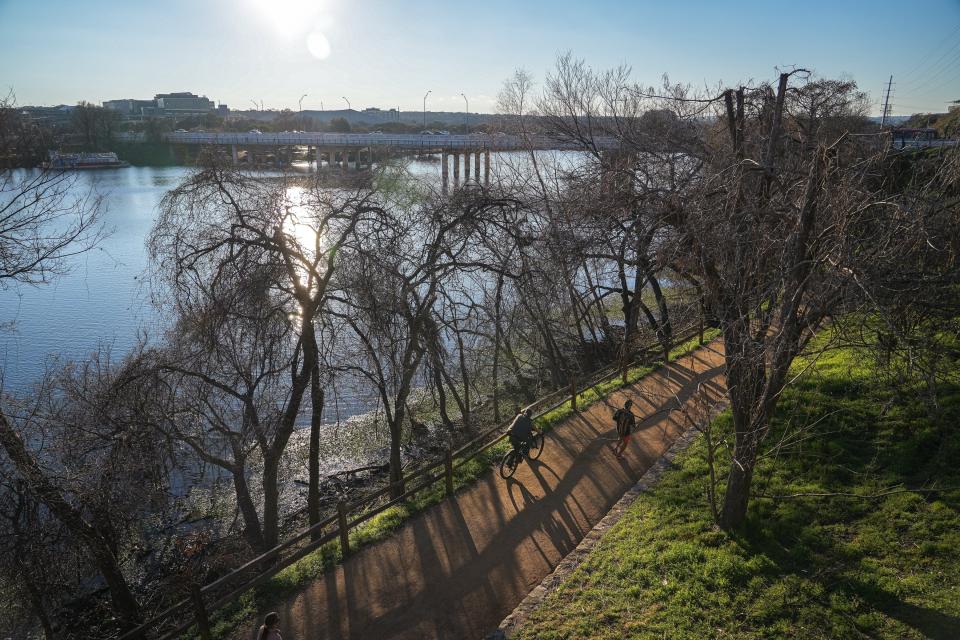The green living movement's case for compact development in Austin | Opinion
Austin’s environmental movement has long been defined by its opposition to development. As far back as the 1950s, activists were fighting new subdivisions and working to preserve open space. Without their work, we might not have Barton Springs, the Barton Creek greenbelt, the Lady Bird Lake trail or Roy Guerrero Park.
These natural treasures helped make Austin a wonderful place to live – and word got out. Our region's population and economy are among the fastest-growing in the country.
Since most of the growth has occurred at the urban fringe, new residents and businesses have exacerbated air pollution, worsened water quality, expanded sprawl in the Hill Country, and strained our drinking water reservoirs.
These challenges will grow, as an additional 2 million people are expected to live in the area by 2050. Will these newcomers continue to settle – as many of us have – at the outskirts of the metropolis? Will we continue the path of more driving, more sprawl and more pollution? Or will we give people the option to live closer to the city, sharing resources and infrastructure, and getting around in less carbon-intensive ways?

We applaud the Austin City Council’s recent action to facilitate that lifestyle. The council has eliminated parking mandates for new developments and permitted three housing units to be built on most single-family lots. Next month, council members will consider a proposal to reduce Austin’s minimum lot size requirements from 5,750 square feet to 2,500. The city council will also consider changing the "compatibility" standards to allow taller buildings with more homes in them. Together, these efforts will help house a growing population in ways that minimize sprawl and protect the environment.
Studies have found compact development can reduce energy use and greenhouse gas emissions, limit polluted runoff into streams and lakes, and protect natural areas. A suburban neighborhood in Austin can consume up to three times more energy during construction and up to 50% more energy on a daily basis than a neighborhood of duplexes and low-rise apartments. People living in compact neighborhoods drive 20%-40% less than those living in sprawling neighborhoods. Development for these compact neighborhoods adds less impervious cover - pavement, roofs and other material that’s unable to absorb rainwater - and thus generates less runoff that can cause flooding and water pollution.
Improving the efficiency of existing drainage systems, as well as using low-impact design principles for new projects, will help minimize the impacts of stormwater runoff into natural waterways and channel it into the soil underground. As we build up in the urban core, we can replace traditional roofs with green ones, paved roads with permeable ones, and portions of mowed lawns with rain gardens. This “nature-based infrastructure” reduces water pollution, flooding, and heat while providing habitat for wildlife and creating a lovelier, more natural city.
In 2022, the council passed a law requiring the use of green infrastructure in larger new developments. The city will soon consider proposals to require new developments to plant trees on adjacent streets and for buildings in the densest parts of towns to install green roofs and walls, rain gardens, permeable pavement or other green stormwater infrastructure.
By creating smaller, lower-cost housing options close to the city center, Austin can reduce the sprawl that devastates our environment. Higher density will help Austin win grants from the federal government to finance Project Connect, which will offer new greener alternatives to driving alone. Together with more robust public transit, extensive networks of sidewalks and bike lanes, nature-based infrastructure systems, and other policy measures Austin can build a more sustainable city.
Land use reforms provide a golden opportunity to reshape how Austin develops in coming generations. By building a compact and connected future, Austin can protect our environment even amid rapid population growth and set an example for other cities.
Metzger is executive director of Environment Texas. Siff is co-founder of the Texas Public Interest Research Group. Dave Sullivan, who serves on the City of Austin Environmental Commission, also contributed to this article.
This article originally appeared on Austin American-Statesman: The green movement's case for compact development in Austin | Opinion

